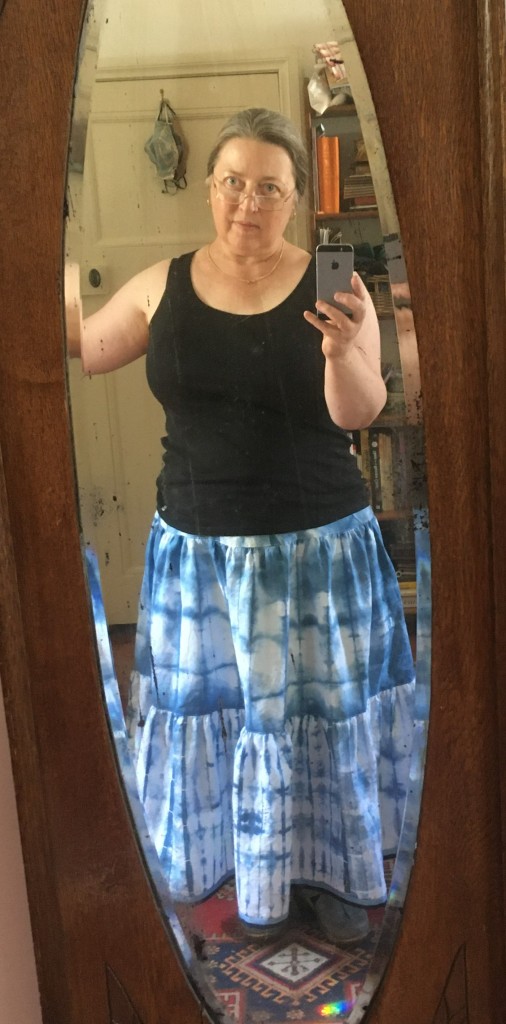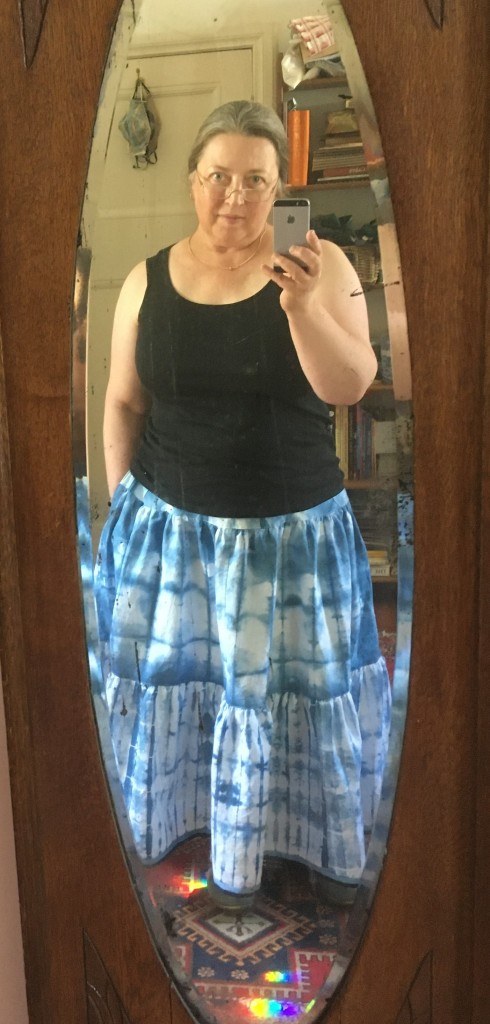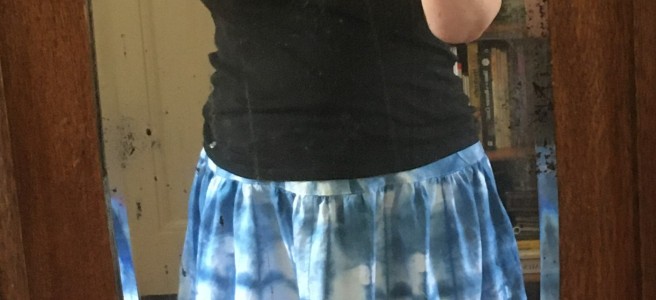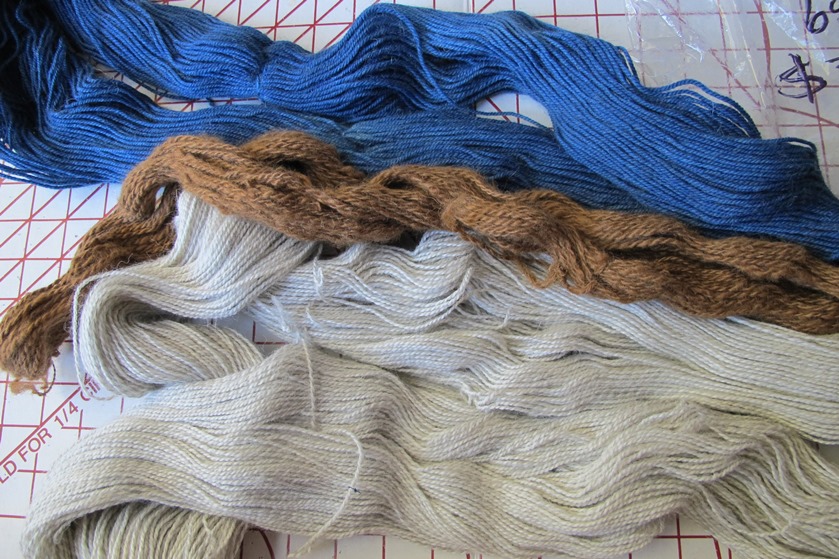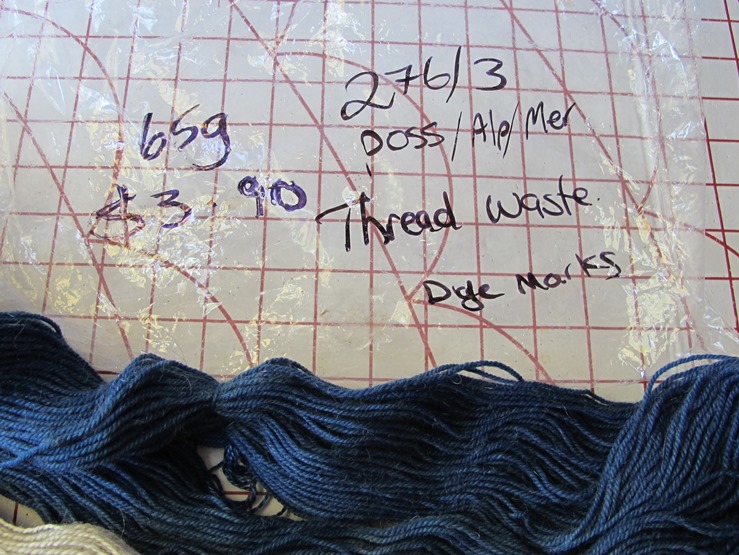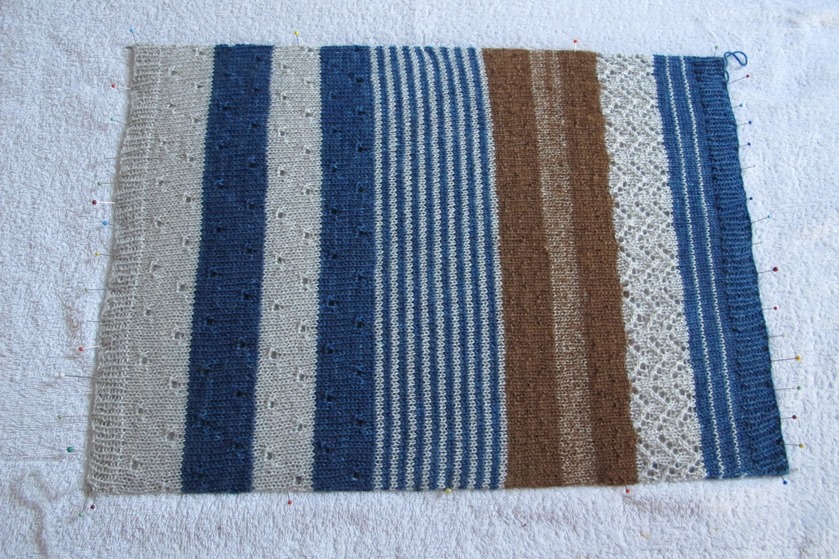When prepping materials to dye in our indigo adventures three years ago now, I pleated up some fine, crisp linen(?)* with the intent of making a tiered ruffled skirt. I was working at speed to get everything ready in time and didn’t think hard enough about how much fabric I needed. This turned out to be only enough for a bit more than the lowest ruffle.
*Possibly not flax? Definitely cellulose fibre. My best guess is a cotton ramie blend. It was bought very cheaply in folded bales from a closed shop clearance sale.

Happily, I also pleated up another piece of the same fabric but slightly differently and with no specific plans attached. This is the piece with the copper coloured clips below
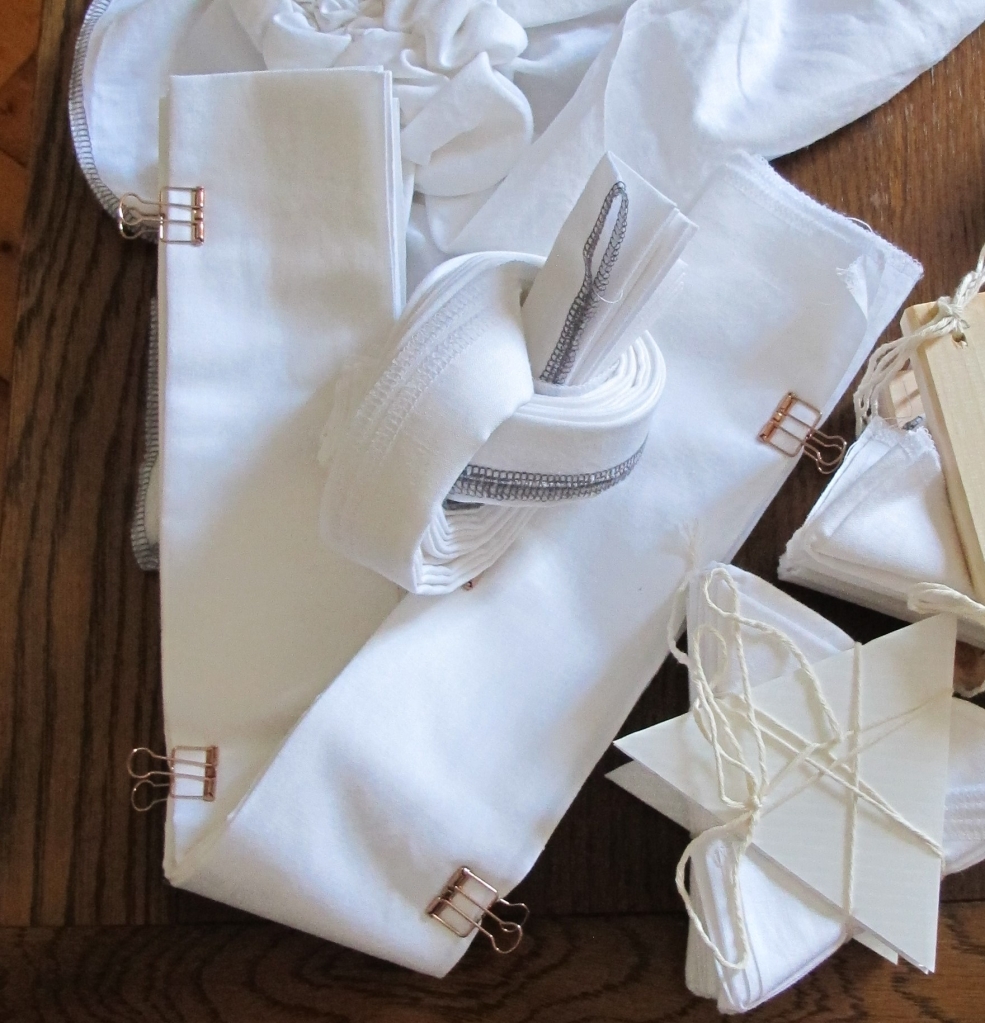
by chance, I have a picture of these three pieces next to each other straight out of the dye vat
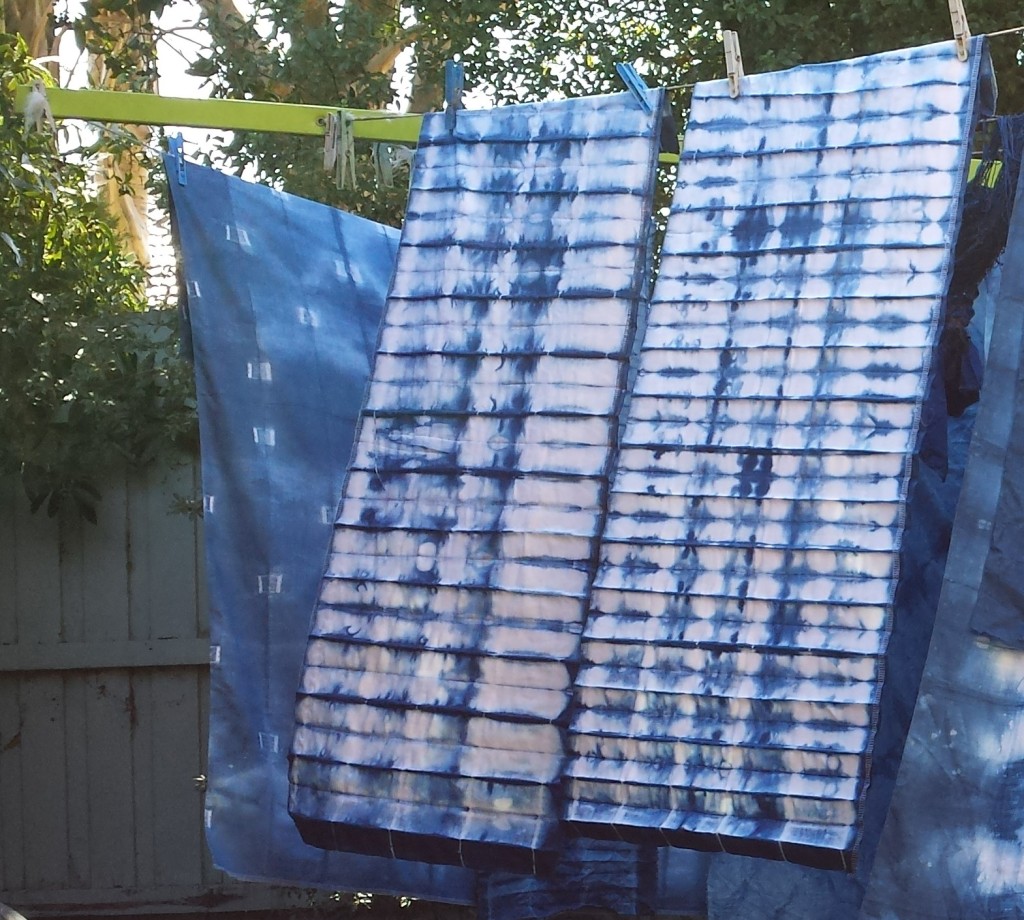
Argh. These images are bigger than I would choose to use. I’ve moved to a different computer and don’t currently have a copy of my usual photo editing program. Maybe I have to bite the bullet and shell out for it.
Anyway, All these pieces started the same size and were folded in three before pleating. So they all broke down most neatly to three 38cm wide strips. I used the darkest three for the middle tier and ended up needing 5 of the remaining six for the bottom tier. I still needed a top section to get the overall length I wanted. I originally meant to make another rectangular cut gathered arrangement for the top part, but flat to the body is more flattering even though it will mostly be covered in wear. So I fiddled appropriate shaped curved pieces out of the bits leftover from the indigo rays frock which is also and usefully, a slightly heavier fabric. This is just pinned, prior to final adjustments. Silly me fitted it over another skirt though so it ended up needing more overlap than intended.

The fastening is similar to the overlap method used in this colourful remodel but buttoned instead of the ties used there. A friend suggested the buttons and I think I like them. They are more comfortable than the ties I think, but require sewing on many buttons to provide the same breadth of adjustment. Optimistically I have placed buttons for my current size and a couple of smaller options. Fingers crossed I don’t need to add more.
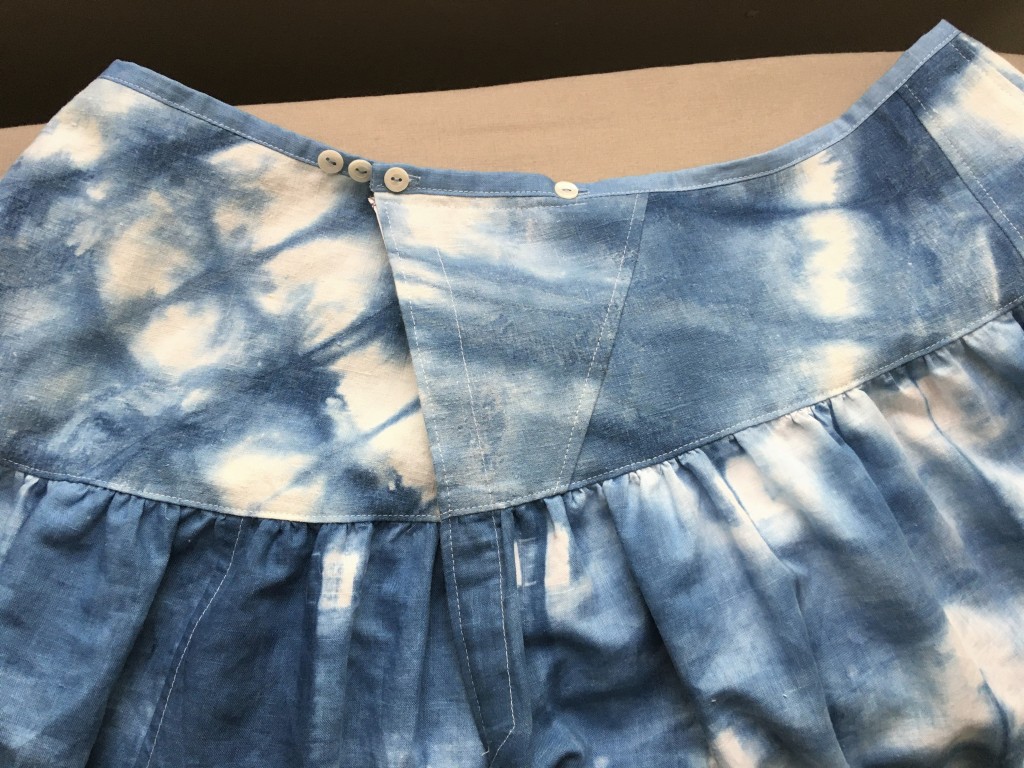
I couldn’t face braining the pockets until I’d finished everything else. So they are not sewn in as elegantly as if I’d planned them from the beginning. I’m happy that they work though, and I ought to be able to make nicer versions if I make another skirt of this kind. Here are the shapes. The front and back need to be different because of the overlap.
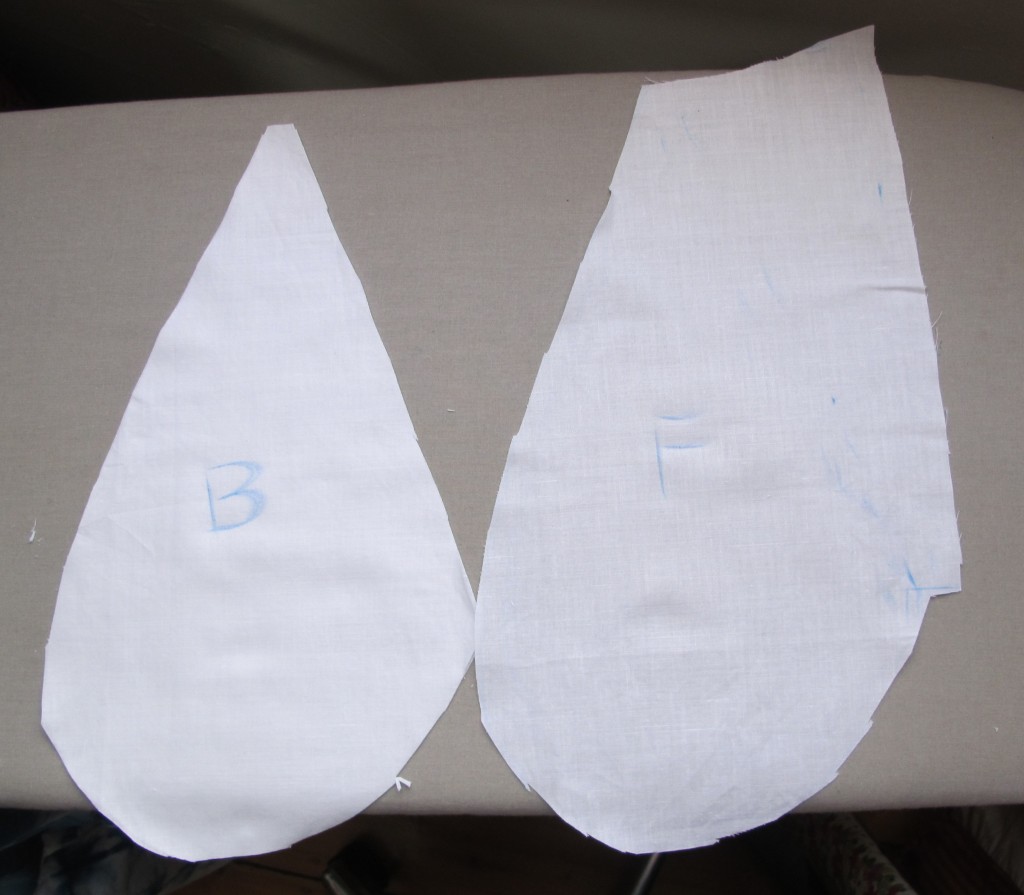
and after insertion: the two sides are sewn together below the opening shown. The front section is sewn in under the waistband to support the pocket and contents, so the pocket bag can’t be fully closed or one can’t get in and out of the skirt!
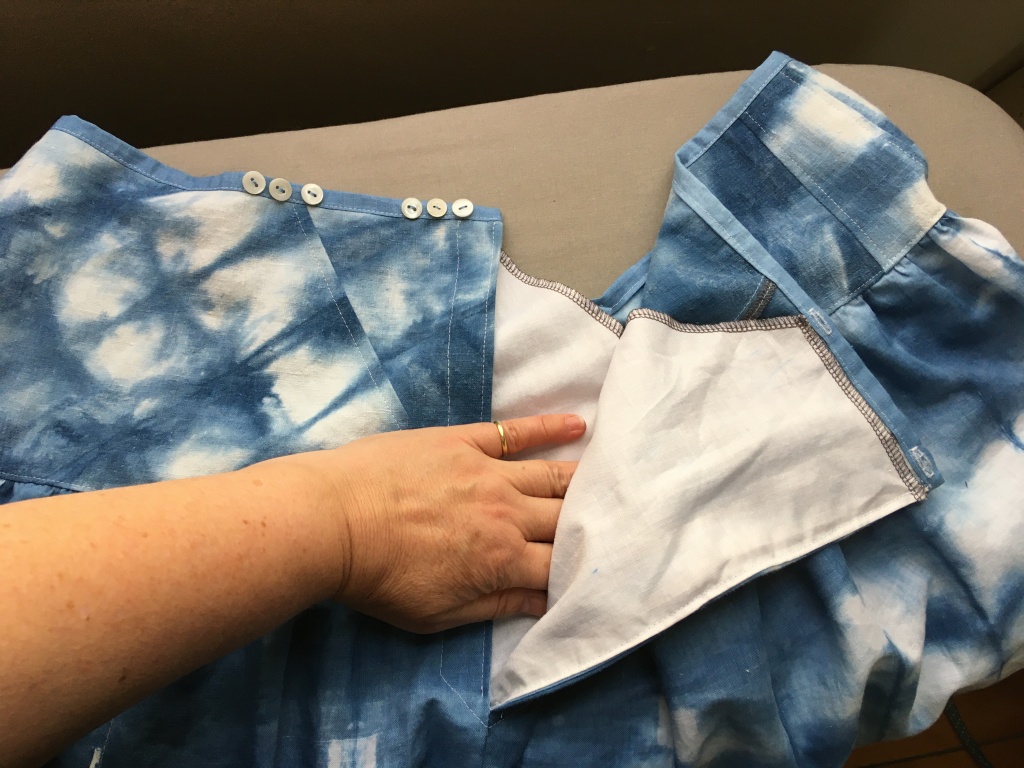
Here is the full thing, front and back
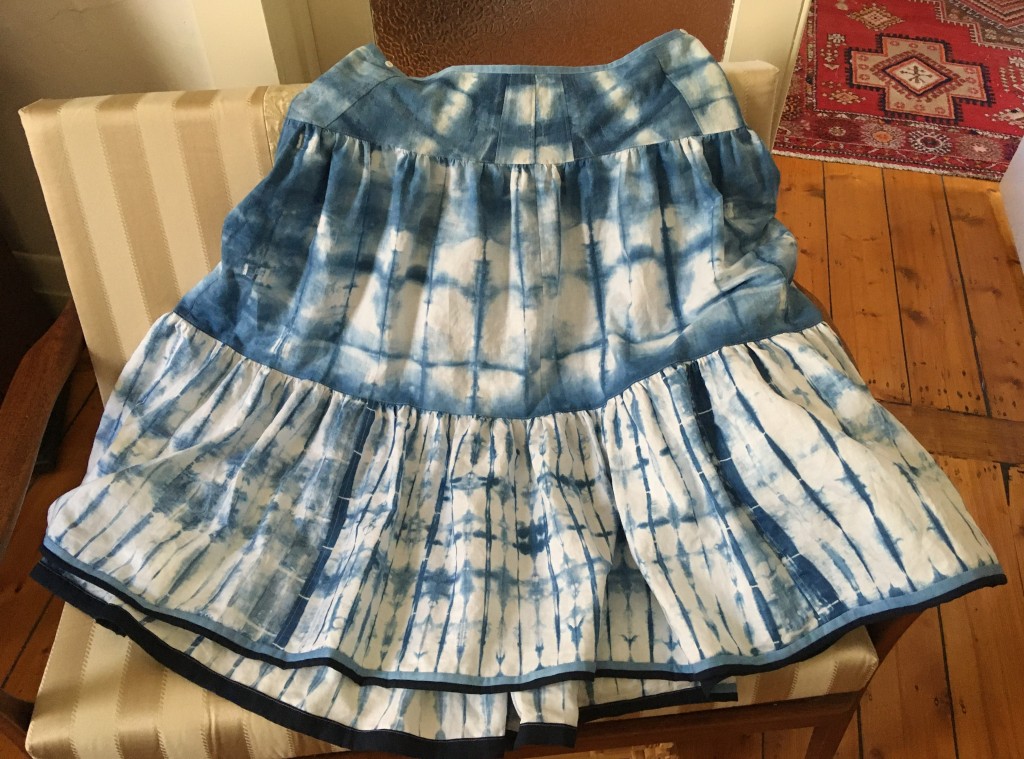
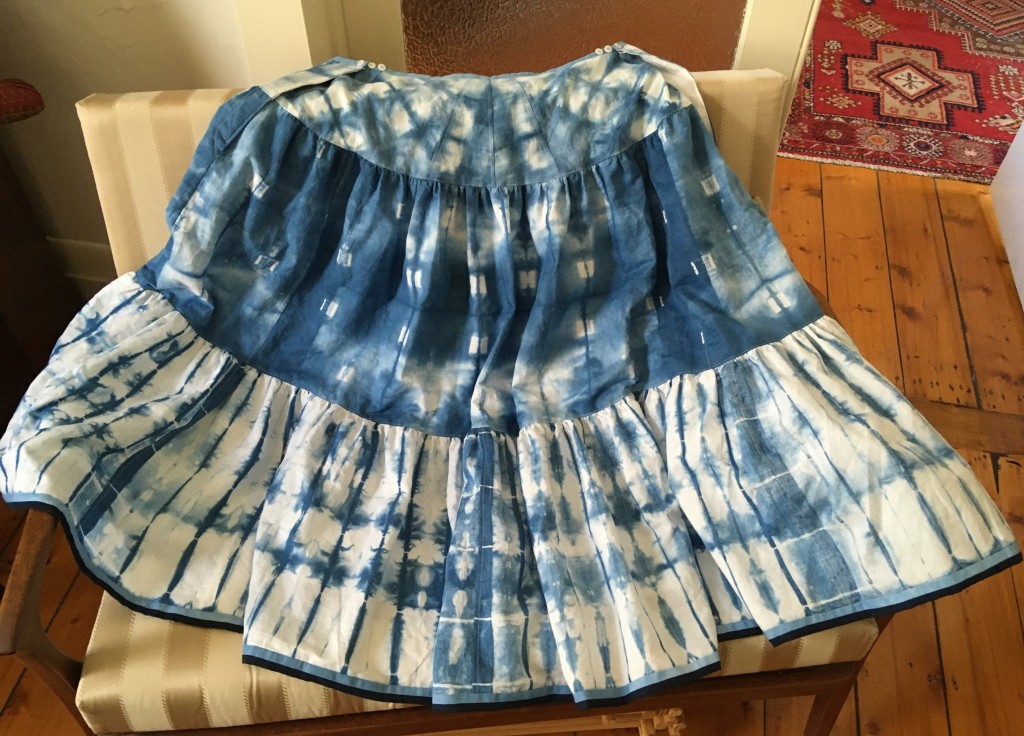
I’m delighted with the hem. I didn’t want to sacrifice any length, so I needed to bind it. Neither the pale blue or dark navy cloth sparked joy on their own for this purpose, but both together felt like a sweet solution, a subtly fussy detail. It took quite a few hours to achieve though. I used patchwork style rotary cutting for accuracy of the strips and fully assembled the border, sewn and pressed before attaching it to the skirt. Worth the effort I think.
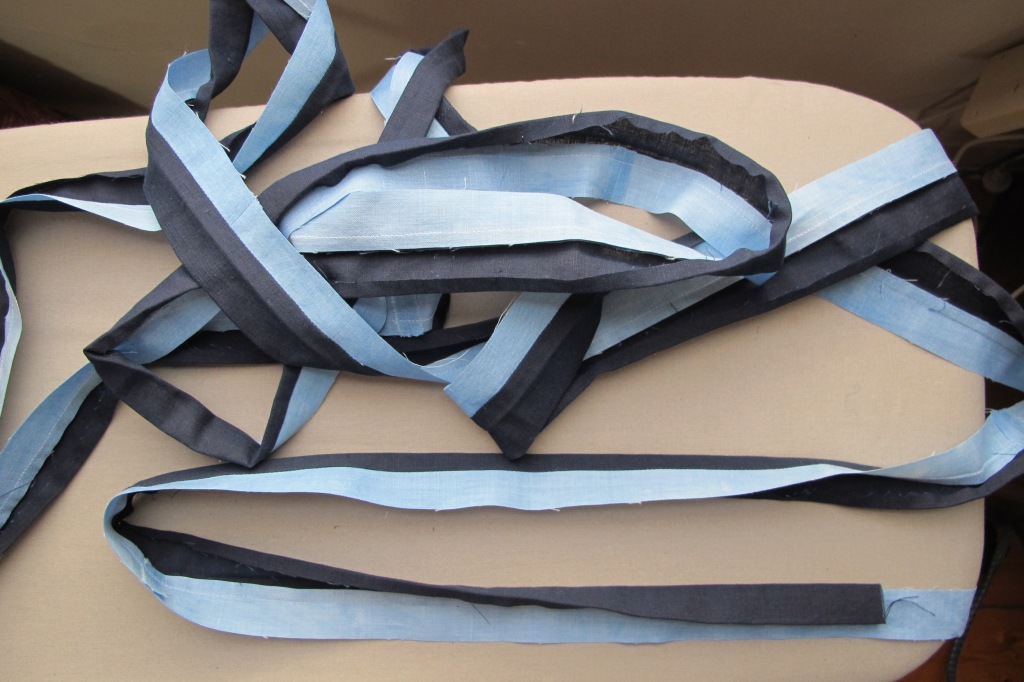
A couple of shots of it on me, one demonstrating the pockets of course. My mirror is the wrong shape for taking pictures of full skirts, but full swishy skirts make me happy. I was worried this one might feel too silly, but happily I like it.
